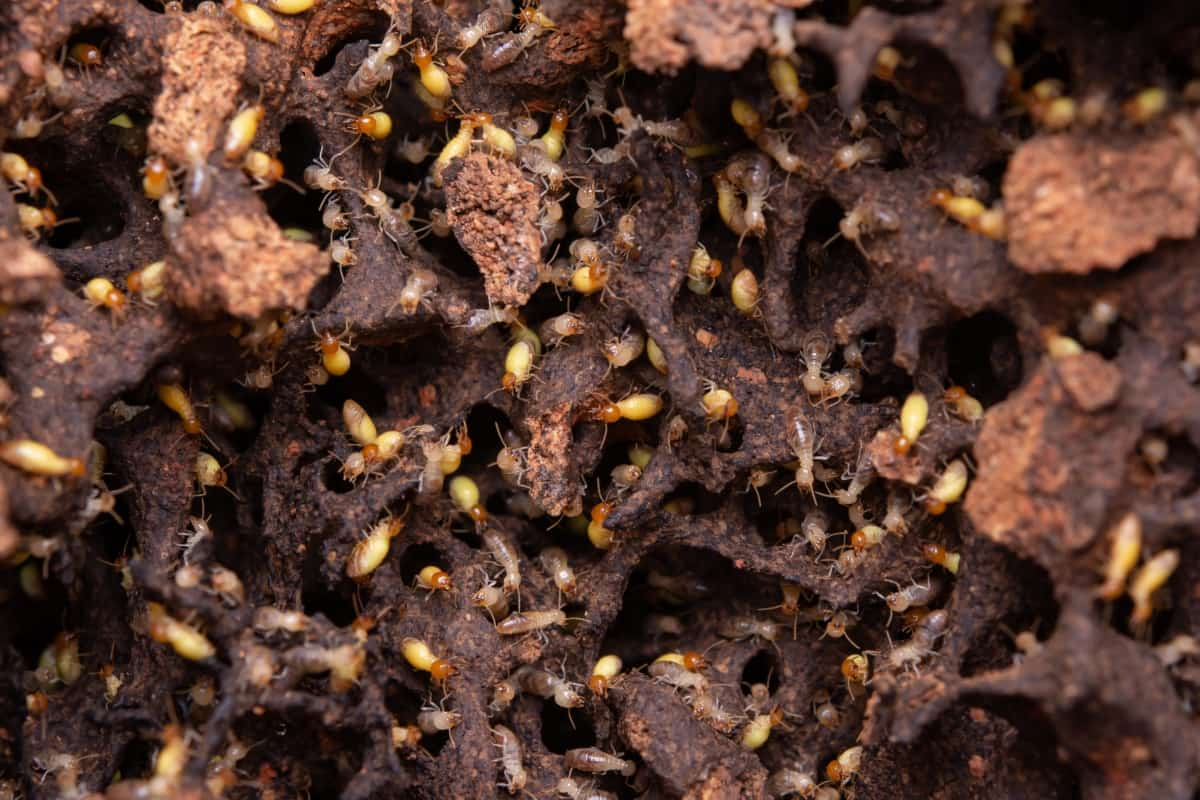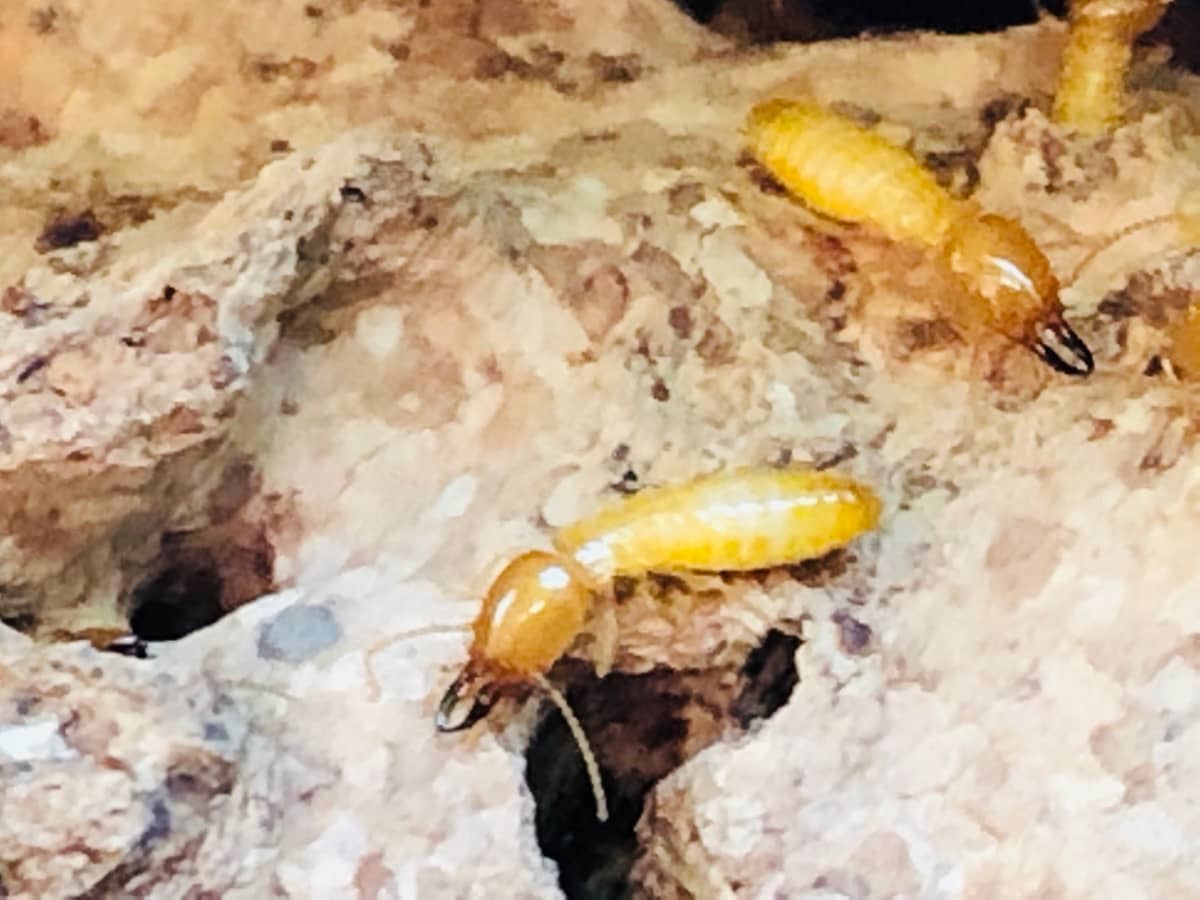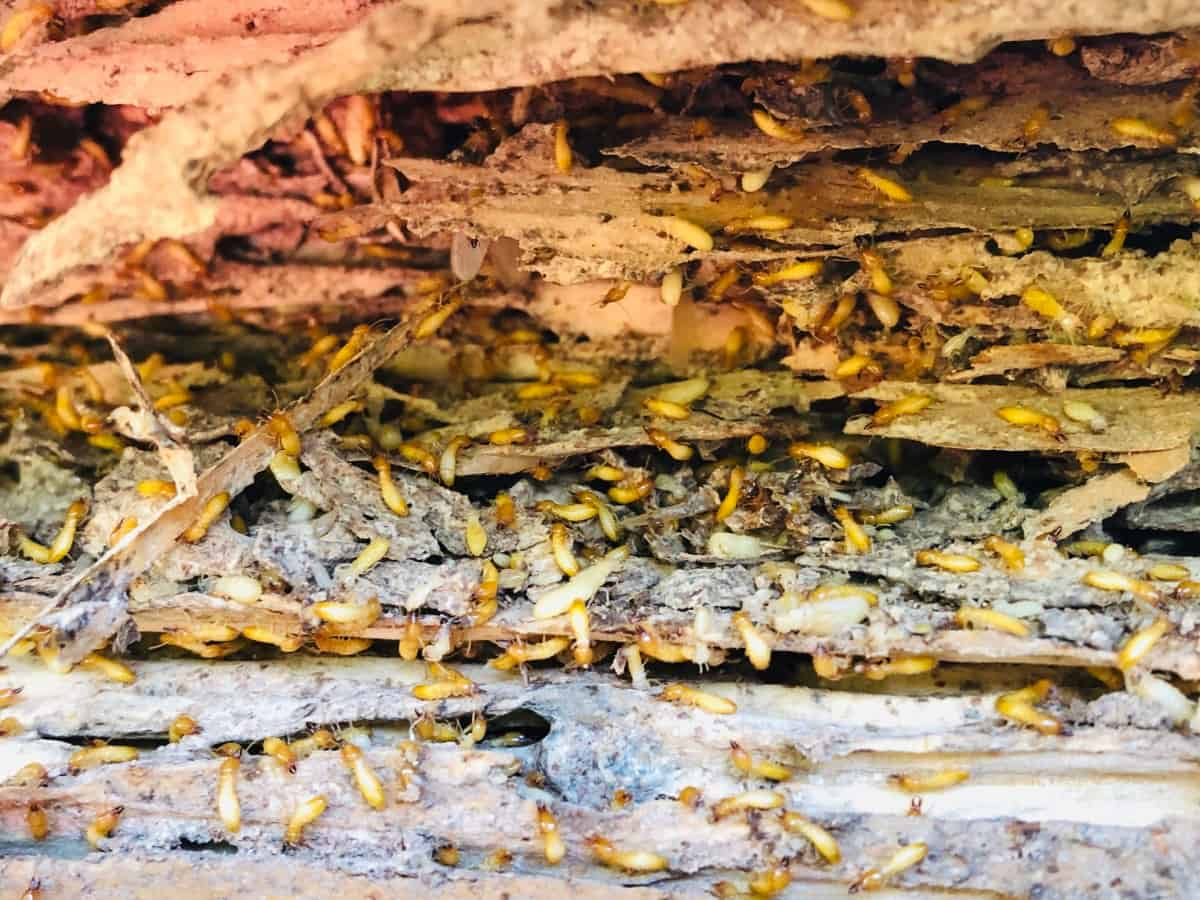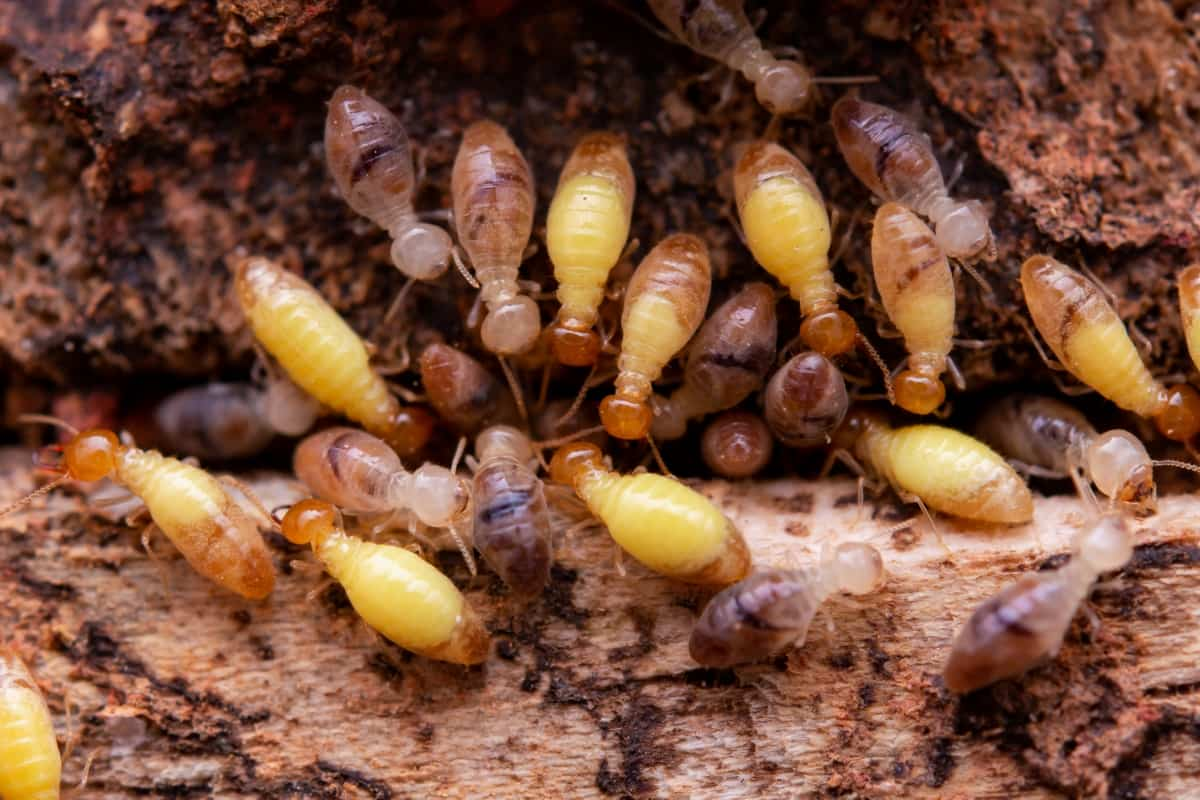Termites are silent but destructive pests that can wreak havoc on your home. In this expert guide, we’ll explore the top 10 signs of a termite infestation. From mud tubes to damaged wood, these subtle indicators can help you identify and address termite issues before they become a major problem.

Top 10 Signs of Termites in Your Home
Mud Tubes
The most typical sign of subterranean termite activity is mud tubes. Mud tubes are used to go from the earth to a food source. They are often located near the foundation of buildings to which they are linked. Mud tubes, which are typically located close to your home’s foundation, protect termites from the elements.
The naked eye can recognize them with ease. Subterranean termite species from soil and termite droppings often construct these moisture-retaining tubes.Remove any locations that are high in moisture and keep wood chips, mulch, and firewood away from the house to keep termites away.
Hollowed or Damaged Wood
Termite damage to wood may be seen under and behind surfaces such as floors and walls. Termites might be hard to detect since they chew your walls from the inside out. These tiny parasites hollow out the wood studs when you tap on walls without coming out. Termites create lengthy grooves in wood as they chew into it to get cellulose. The grooves might be shaped like a honeycomb pattern or like a labyrinth within your walls. These grooves might erode the wood’s strength and cause structural harm over time.
Termite Holes
One of the most typical indicators of these insects that eat wood is the presence of tiny, circular holes in the wood. The termites that swarm abandoned their nests in order to establish new colonies. This is the process by which they create termite escape holes. Termite escape holes are around 1/8 of an inch in size on average.
In case you missed it: Best Homemade Organic Pest Control for Termites: Natural Ways to Get Rid of Termites

After the swarmer departs from the nests, the nymphs inside will prepare a paste of frass to cover the openings.Though they are rare, exposed termite holes that resemble tiny mustard seeds may sometimes be seen in piles of wood. To find these termite tunnels, one usually has to be an expert in termites.These little holes are often an indication that dry wood termites are present.
Discarded Wings
Discarded termite wings near home entry points, such as windows and doors, are a significant sign of termite infestation, especially from swarming species like subterranean termites. These termites, known for their destructive nature to wooden structures, undergo a swarming phase during spring or favorable weather conditions.
Once they find a mate, they intentionally shed their wings, transitioning from flying swarmers to grounded, colony-building termites. The presence of discarded wings is a warning sign, indicating that the termites may be establishing a new colony nearby, which poses a significant risk to homes and other wooden materials. Prompt inspection and professional pest control intervention are crucial in preventing the establishment of a new colony and mitigating the damage termites can cause.
Termite Droppings
Frass is a crucial indicator of termites, especially dry wood termites. Termite droppings with a wood-colored color that are readily confused for sawdust by inexperienced eyes are called frass. During termite examinations, this indication of a termite infestation is sought. Unlike subterranean termites, hardwood termites do not use excrement to build their tunnels. Rather, they force it out of small openings close to the entrances of the nest.This explains why the area they are infesting will have little black markings and a dark, powdery material.
Cracked or Bubbling Pain
Termites mostly eat cellulose, which is found in paper, which is what makes up drywall.Termites make tiny tracks both within and on the surface of the drywall as they eat it. Pin-sized holes might be seen where termites have chewed through your wallpaper or drywall. Termites leave behind microscopic bits of soil in their pinholes in drywall, and bubbling beneath paint or wallpaper is a dead giveaway that termites are present.
Stuck Windows or Doors
Hard-to-open windows or doors can be a sign of termite infestation, which is often misattributed to excess moisture or temperature changes. When termites infest and consume wood, they create a unique issue by consuming cellulose found in wood. As they tunnel through wooden structures, they compromise the structural integrity and introduce moisture, causing the wood to warp or swell.
This damage can be more pronounced than moisture exposure, as the wood may lose its structural integrity, making it brittle and weak. This weakening can lead to additional issues, such as cracks or fractures in the frame, further exacerbating the difficulty in opening or closing windows and doors.
Sagging Floors or Ceilings
Your home’s sagging floors or ceilings may be concerning indications of a termite infestation and can point to serious structural damage. Termites eat wood from the inside out, especially subterranean species, leaving behind a thin veneer that conceals their destructive job. This eventually causes the structural components to deteriorate and droop noticeably.
In case you missed it: Rose Termite Pest Management: Symptoms, Treatment, Chemical, Biological, and Organic Control

Ceilings may seem dipped or bent, and floors may feel particularly soft or bouncy. These indicators are especially concerning because they indicate not just the existence of termites but also the possibility of a protracted infestation that may have damaged the wood’s integrity. Early diagnosis and action are essential for the safety and durability of the structure of your house, as well as to avoid significant damage.
Head Banging Sounds
Another indication of termites is clicking noises emanating from the walls. Termite warriors alert their fellow termites that their colony is in danger by shaking their bodies or pounding their heads on the wood. Termites are sensitive animals that can detect noises and vibrations thanks to organs on their tibia and at the base of their antennae.The termites that work as laborers are noisy eaters who like gnawing on your woodwork. If you put your ear near enough to the wood, you can hear termites munching.
Visible Termite Swarms
Alates, another name for winged termites, are often seen near lights on hot summer evenings. These flying insects are a dead giveaway that there is a termite colony nearby; they are actively searching for new locations to build. Although flying termites don’t directly eat your home, they are an essential part of the termite reproduction cycle. It is recommended to contact expert pest control services as soon as you see them. This is particularly crucial since winged termites often remain adjacent to their original nest and may swiftly infest neighboring buildings, potentially causing harm.
Frequently Asked Questions (FAQ) on Termites
What Do Termites Look Like?
Termites are typically small and pale in color, often resembling ants. They have soft bodies and straight antennae. Winged termites, known as swarmers, have two pairs of wings.
Are There Different Types of Termites?
Yes, there are three main types of termites: subterranean, dry wood, and damp wood termites. Each has distinct behavior and habitat preferences.
In case you missed it: Termites Management in Sugarcane: Symptoms, Treatment, Chemical, Biological, Natural, and Organic Control

Conclusion
Identifying termite infestations in your home is crucial for timely intervention. The top 10 signs of termites include mud tubes, hollow-sounding wood, discarded wings, tight-fitting doors, and windows, blistered or peeling paint, damaged wood, drooping or discolored drywall, clicking sounds, and frass (termite droppings). Early detection and prevention can prevent extensive damage and costly repairs.
- Deworming Schedule for Dogs/Puppies: A Beginners Guide
- How to Prevent and Control Parasites in Goats
- Beneficial Insects in Pest Management
- Natural Solutions for Pest Control in Flower Gardens
- Types of Fungicides Used in Agriculture
- Common Issues in the Fruit Development Stage of Pomegranate Farming
- Fruit Development Issues in Papaya: Easy Solutions and Treatment
- Soil-Borne Diseases and How to Protect Your Plants
- Practices to Prevent Disease Spread in the Garden